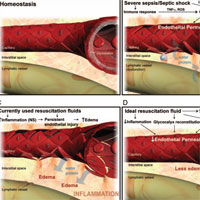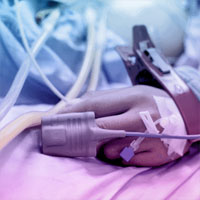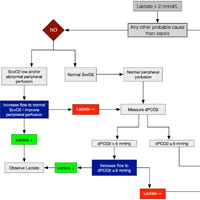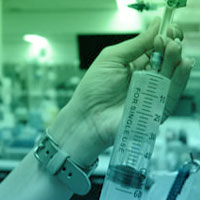Tag: septic shock

I Had PTSD After a Critical Illness. Apparently That’s Fairly Common
The emotional trauma of a near-death experience causes ongoing emotional and physical symptoms in one-third of ICU patients. PICS doesn't have a time limitation and can be triggered by almost anything. I was suddenly anxious... read more

MAP of 65: Target of the Past?
Septic shock is defined as sepsis with hypotension refractory to fluid challenge and requiring vasopressor support combined with an increase in arterial lactate reflecting impaired cellular energy metabolism and dysoxia.... read more

Choice of Fluid Therapy in the Initial Management of Sepsis, Severe Sepsis, and Septic Shock
Sepsis results in disruption of the endothelial glycocalyx layer and damage to the microvasculature, resulting in interstitial accumulation of fluid and subsequently edema. Fluid resuscitation is a mainstay in the initial... read more

Presenting Symptoms Independently Predict Mortality in Septic Shock
More than one third of patients with septic shock presented to the emergency department with vague symptoms that were not specific to infection. These patients had delayed antibiotic administration and higher risk of mortality... read more

Decatecholaminisation during sepsis
While necessary and life-saving in the early fight or flight reaction to any insult, prolonged adrenergic stress is detrimental and contributes to organ dysfunction. In the largest trial to date, Morelli et al. enrolled septic... read more
Hemodynamic Support of Pediatric and Neonatal Septic Shock
Margaret Parker, MD, MCCM, speaks with Joseph A. Carcillo, MD, about the article, "American College of Critical Care Medicine Clinical Practice Parameters for Hemodynamic Support of Pediatric and Neonatal Septic Shock," published... read more

In vitro comparison of the adsorption of inflammatory mediators by blood purification devices
Septic shock, a leading cause of acute kidney injury, induces release of pro-/anti-inflammatory mediators, leading to increased mortality and poor renal recovery. This is the first in vitro study directly comparing three... read more

The Relationship Between ICU Hypotension and In-hospital Mortality and Morbidity in Septic Patients
Current guidelines recommend maintaining a mean arterial pressure (MAP)≥ 65 mmHg in septic patients. However, the relationship between hypotension and major complications in septic patients remains unclear. We, therefore,... read more
Pushing Pressors in the Periphery
The mantra of the Broome Docs site is "bringing great care, out there." And today's topic goes right to the heart of that theme. It is one of my pet topics – so apologies in advance if the rant is too long or detailed.... read more

Incidence of hypotension according to the discontinuation order of vasopressors in the management of septic shock
Tapering NE rather than AVP may be associated with a higher incidence of hypotension in patients recovering from septic shock who are on concomitant NE and AVP. However, further studies with larger sample sizes are required... read more

The Ten Pitfalls of Lactate Clearance in Sepsis
Clearance is the removal of a substance from blood, expressed as a volume (milliliters) over time (minutes). However, changes in lactate levels are the sum of ongoing production and removal from the blood by excretion (e.g.,... read more

Low-dose Corticosteroids for Adult Patients with Septic Shock
The results of this systematic review provide an evidence summary to inform clinicians regarding decisions to use corticosteroids in adult patients with septic shock. We found that assignment to treatment with corticosteroids... read more

Guidelines for the Diagnosis and Management of CIRCI in Critically Ill Patients
This part II of the guidelines for the diagnosis and management of critical illness-related corticosteroid insufficiency (CIRCI) in critically ill patients is related to acute illnesses that may be complicated by CIRCI. We... read more

Fluid Bolus Over 15-20 Versus 5-10 Minutes Each in the First Hour of Resuscitation in Children With Septic Shock
Children receiving fluid boluses over 5–10 minutes each had a higher risk of intubation than those receiving boluses over 15–20 minutes each. Notwithstanding the lack of difference in risk of mortality and the possibility... read more




